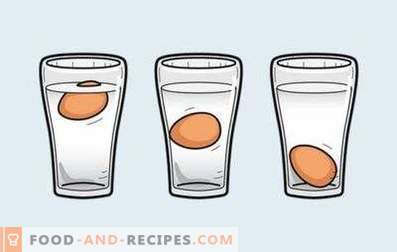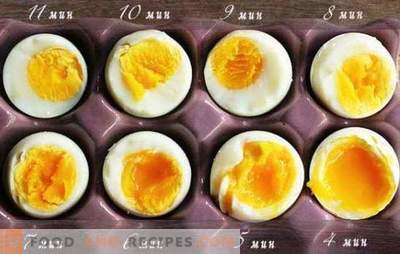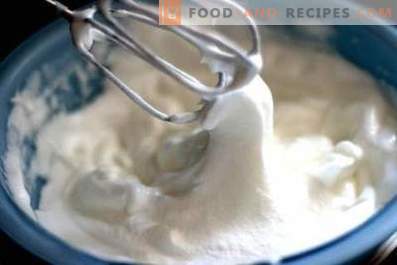
Eggs are not only the most organic, but also the most dangerous product for human health. Not to mention the danger of contracting salmonella, eggs can easily get stuck in the refrigerator - in the store, at home, and by their appearance there is no way to determine freshness and quality: there is always the risk of putting a time bomb on the table.
Quality marks
Store packaging with eggs always contains information about the expiration date - do not be lazy to carefully study them. Guarantees of egg freshness in this case are given by the supplier. Fresh eggs have a frosted shell, and eggs of the same batch resemble each other like twins. If this is not the case, it is worth thinking: perhaps the box was supplemented with a specific purpose. No, even a phenomenal sense of smell will not recognize the rotten egg, while the shell is intact (unless, of course, you are a dog). And only a crack in the shell gives meaning to sniffing.
The time lag during which eggs can still be eaten after the expiration date is three days. In this case, it is especially important to ensure that the consumption of the product does not cause harm to health.
Buying eggs on the market from random people naturally carries great risks. Preference should be given to a local product. When purchasing a batch, you need to understand that it was most likely collected more than one day.
Before use - shake up
The comic name, however, accurately reflects the essence of the most accessible egg freshness test. A fresh product will not give the sensation of an iridescent liquid and extraneous noise — gurgling — inside the shell. The content of the stale egg loses its uniformity, and the center of gravity of the stratified protein shifts as it moves, giving the impression of a rolling ball. Gurgling sounds indicate that air has got under the shell and has expanded the natural air chamber that each egg has.
On a body immersed in a liquid ...
The great Archimedes long ago and finally solved the question of how objects placed in a fluid behave. But the egg is exactly the subject with which everything is not so simple. In the composition of what is hidden under the shell, the yolk has the greatest density, and the fresher the egg, the higher it is. The product of impeccable quality with a minimum volume of air chamber, placed in a container with water, will be firmly held at the bottom. The longer the shelf life, the greater the “buoyancy” of the egg due to evaporation of the liquid in the protein, the accumulation of air in the chamber and the yolk stratification. Thus, an egg floating on the surface of the water will have clear signs of an expired. At the same time, the composition of water does not play any role - on the contrary, salt water more intensively “pushes” objects.
Let there be light
You can judge the egg's freshness by bringing it to a strong source of light and examining the contents to the light. The most convenient way to do this is with a table lamp with a powerful lamp. Large heterogeneous formations under the shell, the so-called pugs, should alert the hostess. Well distinguishable yolk should be located in the center.
Owners of lamps with ultraviolet light sources to test eggs even easier. In this spectrum, fresh eggs get a bright red color, and rotten eggs - gray or purple.
When masks are reset
It is impossible to cook scrambled eggs without breaking eggs. The well-known saying does not mention that “unreliable” eggs should not be immediately poured into the pan. The specific smell of hydrogen sulfide will become an unmistakable sign that eggs cannot be eaten, and their peremptory sentence. The freshness of a broken egg can be determined by the type of protein and yolk, the main thing is that it survived. The freshly laid egg has a yolk that holds its shape well, and a dense, viscous protein clustered around it. The more watery the protein, the more it spreads over the surface of the plate. Such eggs should be subjected to heat treatment. An indirect sign of freshness can be the so-called flagella - similar non-white threads of yolk formation, fixing its position inside the egg. Over time, they disappear without a trace. Unfortunately, the color of the yolk can not be concluded about the freshness of the egg. Scary many microscopic red blotches are perfectly safe for health.
The ease of cleaning eggs does not depend on their freshness, but on whether the air got under the film, located under the shell, after it was broken.
Trouble from not waiting
An incredible amount of pathogens are concentrated on the shell surface. Therefore, the eggs must be washed before use - unfortunately, this thesis is not yet rooted in the mind of the inhabitant.
In conclusion, we note that the population of salmonella does not affect the appearance of eggs and yolks. It can be detected only during the bacteriological examination.























